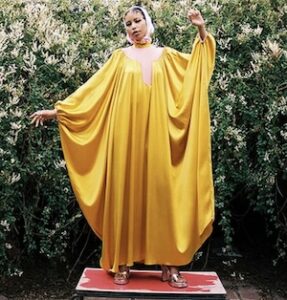Pure: Authentic Experience
By Jo Phillips
“To evoke in oneself a feeling one has once experienced, and having evoked it in oneself, then, by means of movements, lines, colors, sounds, or forms expressed in words, so to transmit that feeling that others may experience the same feeling — this is the activity of art.
Art is a human activity consisting in this, that one man consciously, by means of certain external signs, hands on to others feelings he has lived through, and that other people are infected by these feelings and also experience them.”
In 1897 Leo Tolstoy wrote his What is Art? And at that time he said: “Art, in our society, has been so perverted that not only has bad art come to be considered good, but even the very perception of what art really is has been lost.” Safe to say, the same thing is happening in the art world nowadays. How can you even tell what’s good and what’s bad? Who decides that?
Have you ever been in a situation when you went to a museum or an art gallery with a friend and you both had a completely different opinion on the same piece of art (and who knows, maybe these opinions were not the ‘right’ ones and the artist intended something else)? Perhaps, most of us have experienced that… Is it even possible to achieve authenticity of experience in art while we might see an object in a very different context? Moreover, we might be unable to understand important aspects of the work. Plus, all the modern exhibitions cannot present the work in its authentic condition. Artificial lightning and settings looks beautiful but there is a big chance its going to ruin the authenticity of experience.
And it has always been like that. Even indisputable classics do cause the debates and people see and understand them differently.
The Mona Lisa by Leonardo da Vinci
This painting is the most famous, most visited, and the most parodied in the world. It has never failed to captivate generations with its mystery, and the controversy around it is still ongoing. Some people love it, some people think it’s hugely overrated. Mona Lisa’s famous smile is the subject of many interpretations. It’s a known fact that people see it differently. Lots and lots of professors from various colleges and universities have suggested the reasons why is it so and all of these reasons are different.
Portrait of Lisa Gherardini, wife of Francesco del Giocondo, known as the Mona Lisa (the Joconde in French), 1503–19, oil, 77 cm × 53 cm, Museè du Louvre, Paris
The Black Square by Kazimir Malevich
This painting is completely different to the classic Mona Lisa but it has caused just as many arguments. If you Google search “black square”, you’ll see dozens of articles about the ways to interpret the piece. Some critiques say it’s not actually a square and it’s not black, others see it as a revolutionary symbol. The artist himself said: “[Black Square is meant to evoke] the experience of pure non-objectivity in the white emptiness of a liberated nothing.” Does this help to understand the painting better? Maybe it’s really easier to ask for help from Google…
The Black Square, 1915, oil on linen, 79.5 x 79.5 cm, Tretyakov Gallery, Moscow
So, maybe we should not chase authenticity of art experience? These two paintings can perfectly demonstrate how differently each person sees art. And it’s not bad, that is how it’s supposed to be. To quote Tolstoy once again: “But how are we to define good and bad art with reference to its subject matter?”







